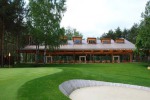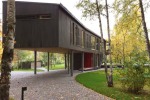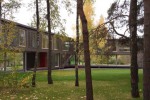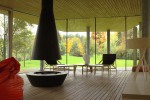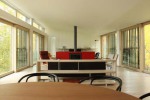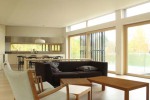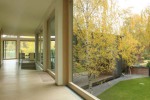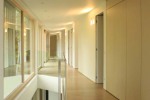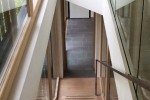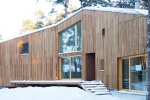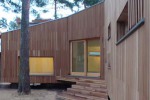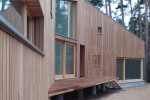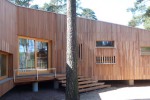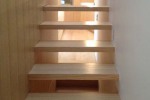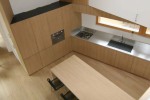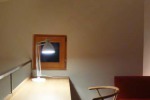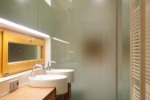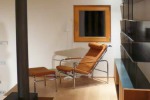Studio Zanetti Architectural Design was given the task of designing two residences (called in Russian "dachas"), out of town on different sites deep in the countryside: one near Moscow, within the Pirogovo Golf Club, the other north of St Petersburg, facing onto the Gulf of Finland. The studio was able to develop the projects in complete architectural freedom, thinking from the start in terms of buildings constructed completely of timber, especially because of the historic link between the Russian people and nature, their own forests. «When I had established the impossibility of constructing the buildings on site in Russia," explained Umberto Zanetti, "after contacting numerous construction firms and seeing the difficulties, we ended up thinking of building the residences in Italy and sending them to Russia, thus solving all the problems. The dachas thus became, so to speak, flying dachas. Sending is a word which is not normally applied to a house, but the thought, which up to that point was "in progress", took concrete form when people in Italy began to despatch the first emergency dwelling complexes after the l'Aquila earthquake: these were prefabricated timber buildings transported to the site with great speed. When the plans were completed, but still without 'wings', I set up a tender competition among some of the players in the Abruzzo operation, receiving assurances from all of them that the transport operation was in fact possible».
The first phase, the design stage, required the transfer of the two-dimensional CAD 3D drawings, developing a three-dimensional model of the project and of its breakdown into assemblable prefinished elements (structure, insulation, waterproofing, outer cladding and closures). The second phase, the production stage, consisted in cutting the panels in X-Lam, made in Austria, with a laser cutter, and in the finishing and pre-assembling processes, carried out at the factory in Italy. As regards the technological systems, the water and sanitary apparatus was designed with bathroom cells totally prefabricated and already equipped inside with all the finishes and fittings; the heating and electrical systems were made on site with their branches and terminals, starting from control panels and joining manifolds already prepared at the factory. Finally, Zanetti carried out the dismantling in the factory, the loading for despatch (using vertically loadable mobile cranes and balances) and reassembly of the prefabricated structure on site, bedding it on the foundations, and also the completion of the technological systems and the application of the internal finishes, before the arrival of the snow and the severe winter temperatures.
According to Zanetti "Timber construction showed itself to be appropriate not only for fitting in with the natural and cultural context, but also because of the specific characteristics connected with its precision, which, with tolerances limited to only 5 mm, enabled extremely rapid assembly, and because of its lightness which proved to be fundamental in all the movement operations, and the thermal insulation which was provided in large part by the loadbearing structure itself".
The two architectural projects were fitted into the natural environment of the site without felling a single tree. The particular climatic context of the locations determined the layout of the residences, the orientation of the rooms and the creation of glazed openings.
In the case of St Petersburg, in particular, the design is star-shaped, and is conceived for insertion between the large trees on the site: it is strongly anchored to the ground and the centre is occupied by the areas for communal living and movement between kitchen, dining room and veranda, and forms the connection between the two terraces; the points of the star house the bedrooms and the large living room; the titanium zinc roof, finally, offers a sort of protective barrier with respect to the taller buildings nearby. At Moscow, on the other hand, the deeper perspective of the outlook, due to the view over the golf course, suggested the idea of raising the building to allow the gaze to pass over the space from one end of the plot to the other, and at the same time to site the inner rooms at a height more sheltered from the players on the course.




